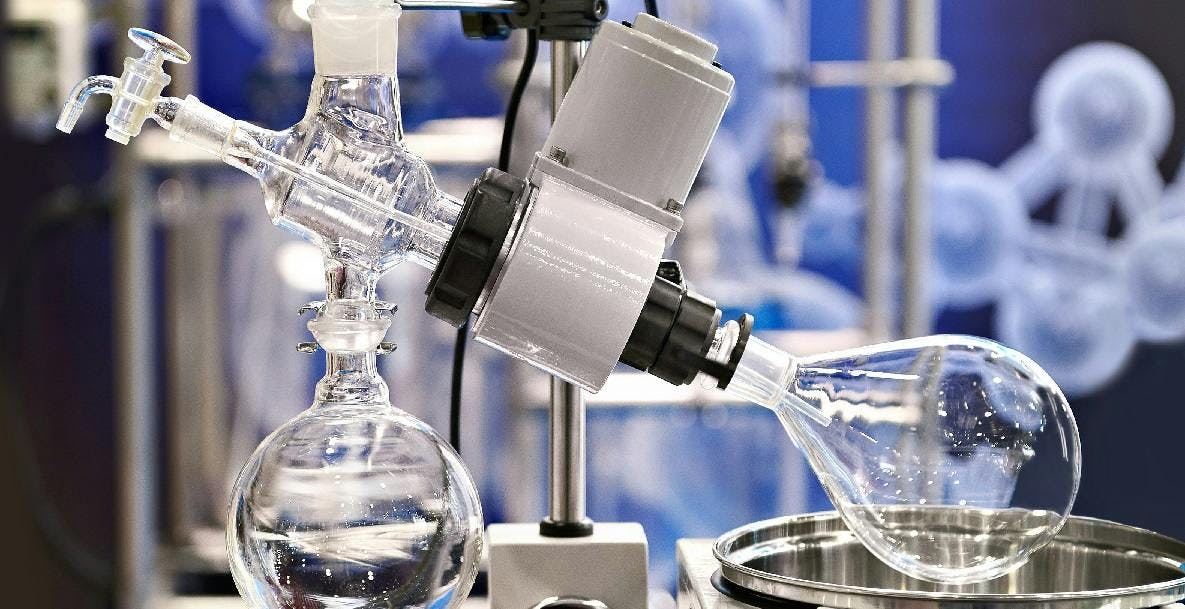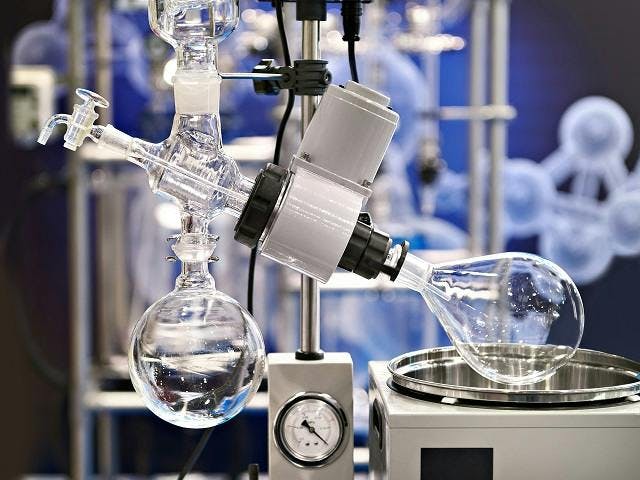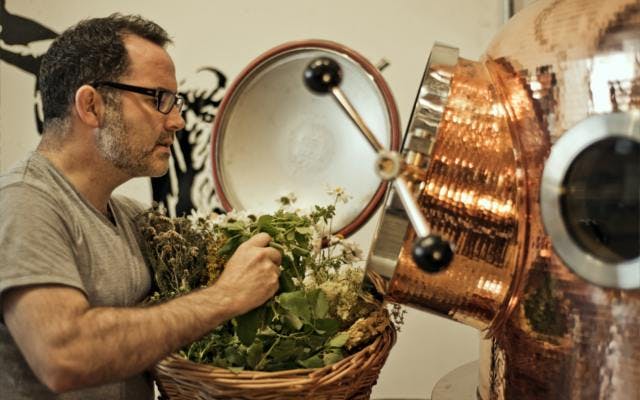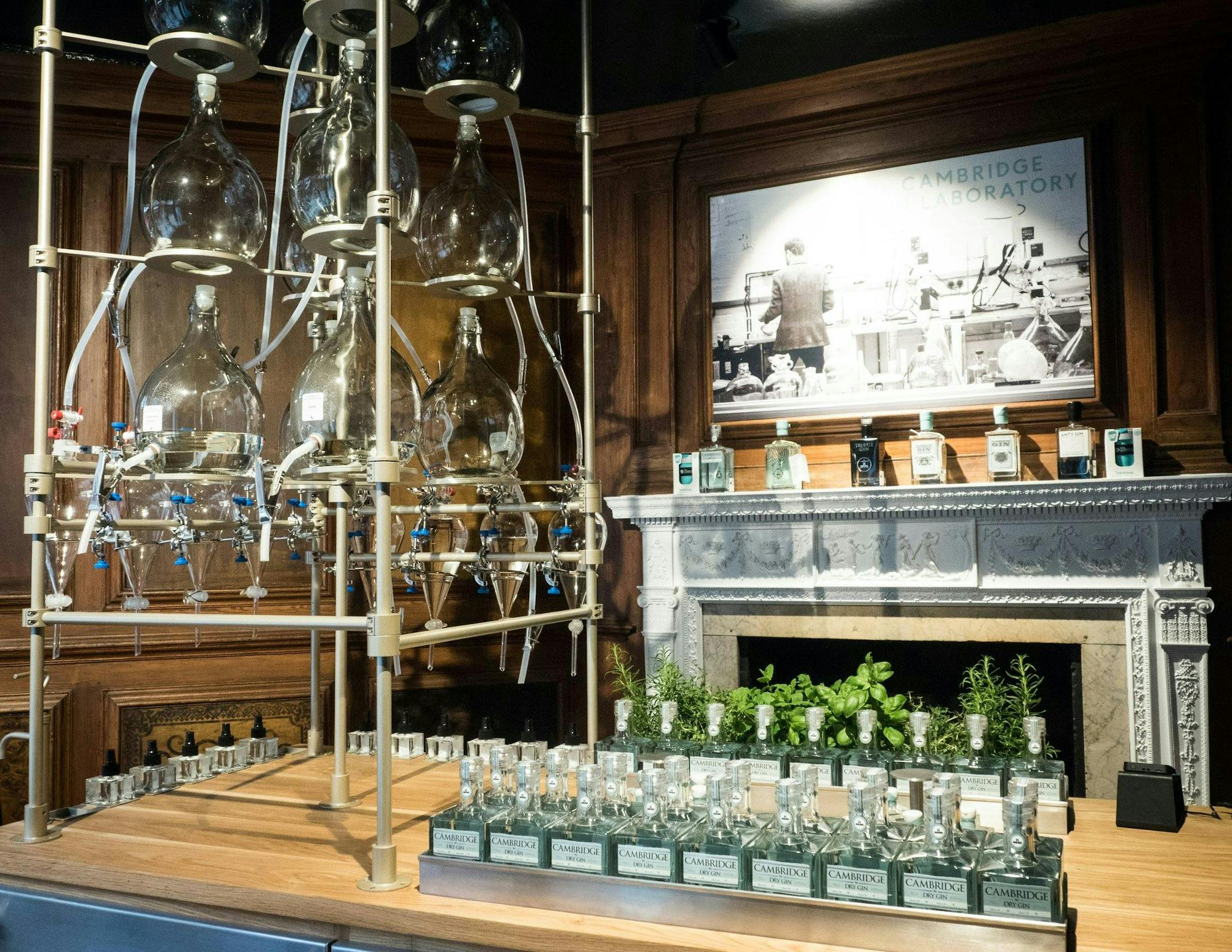
Ginnovation and progress: How will gin be made in the future?
Cambridge Distillery - the producers of Craft Gin Club’s November 2019 Gin of the Month - is one of the most innovative distilleries in the world. However, they’re far from the only distillers turning to unusual techniques to make our favourite tipple!
From ancient techniques revived to nifty new gadgets, these are the ways some of our favourite distillers are changing how gin is made.

Rotary Evaporators
What is it?
A rotary evaporator (‘rotovap’ for short) is a machine about the size of an espresso maker – but it packs a serious punch! These gadgets help some of our favourite distillers extract flavours from botanicals too delicate to run through a traditional copper still.
Which gins use one?
Dodd’s Gin and Cambridge Distillery both use these nifty bits of kit!
How does it work?
A rotovap works like a vacuum. The distiller puts the botanical, along with the base spirit, in the chamber and turns on the machine. The rotovap first reduces the pressure in the chamber, which means that the base spirit has a lower boiling point.
A lower boiling point means that the alcohol can be drawn out of the solution, as it would be in a copper still, but at a far lower temperature, so the delicate flavours of the botanicals aren’t destroyed by heat in the process.
Why is it used?
Very delicate, fresh botanicals will be obliterated by the high heat of a traditional copper still. To withdraw these lovely flavours without wrecking them, a rotovap is just the ticket!

2. Hyper-Local Botanicals
What is it?
Just as restauranteurs and foodies are focused more than ever on where their food comes from (and how far it’s travelled to reach the table), distillers and gin lovers alike are taking a more critical eye to botanical blends. More and more, exotic botanicals are giving way to fresh, just-picked flavours which, when combined, give the finished spirit the scent and flavour of a very specific time and place.
Which gins use them?
Cambridge Distillery will only work with botanicals that grow naturally within walking distance of their door, while Glendalough Distillery produces seasonal gins, using only what they can forage in their Irish valley during a particular time of year.
How does it work?
Hyper-locality is all about using self-imposed constraints to create something totally new. William and Lucy Lowe of Cambridge Distillery, for example, can’t use citrus flavours, as lemon trees don’t grow naturally in their bucolic hometown. So they turned instead to the lemon verbena in our exclusive, limited-edition Gin of the Month – to spectacular effect!
Why are they used?
When a distiller wants to transport drinkers to a specific time and place – a Cambridge meadow in the autumn, or Glendalough Valley in Ireland during the spring – using hyper-local botanicals is a great way to capture a destination’s essence in a bottle.
Plus, it presents a fantastic challenge – one many curious distillers don’t want to pass up!

3. Blending
What is it?
Unlike traditional distillation, where the liquid you capture from the still is the finished product, some distillers work with each botanical individually or in batches of similar flavours, and blend them together to form a final liquid.
Which gins do it?
Cambridge Distillery and the makers of Elg Gin and Naud Gin all consider blending a key stage in the distillation process.
How does it work?
In traditional ‘one shot’ distillation, all of the botanicals are added into the still, along with the base spirit, at the same time. But some distillers want morecontrol over how their botanicals are distilled or the balance of flavour in the finished liquid, and they achieve this by breaking the distillation process into individual parts.
These distillers will create individual distillates of all of their botanicals – think of these like a piece of the finished spirit, but with only one flavour in each liquid.
They’ll then blend these individual distillates together, making sure to stick to precise ratios, until they have a finished spirit that contains all of the flavours they’re looking for, working together in perfect harmony.
Why is it used?
Every distiller will have his or her own reason to blend rather than rely on one-shot distillation. For Cambridge Distillery, it allows them to capture every flavour at its absolute best. For biochemist-turned-distiller Henrik at Elg Gin, who scientifically measures the amount of each flavour compound in his distillates, it’s about complete precision. For the distillers of Naud Gin, whose family has been making Cognac for generations, blending is an important way of capturing the heritage of their distillery.
Like this? You might also be interested in…










